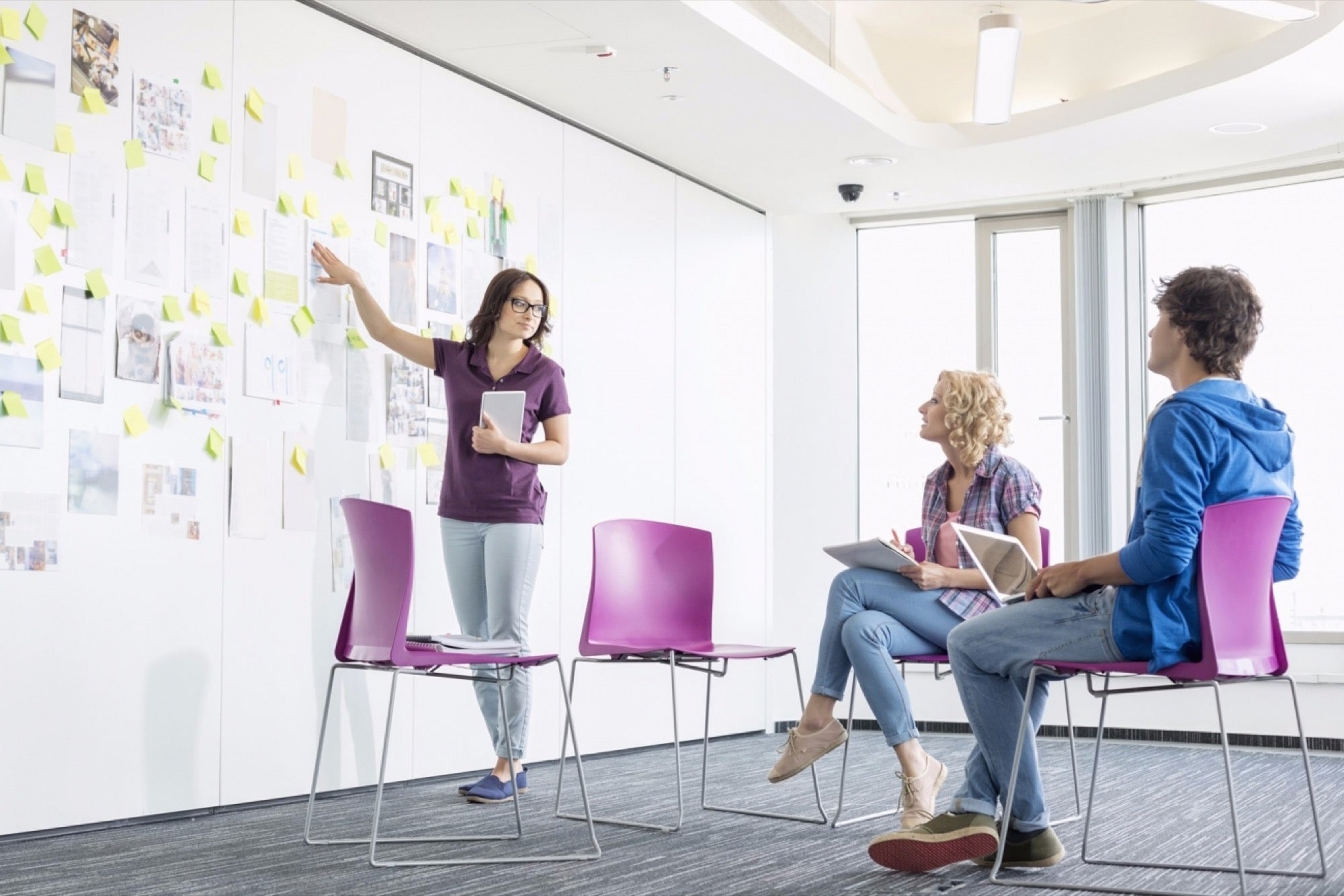Office Design in 2017 Will Once Again Focus on the Employee Personalized and active offices are key to worker engagement.
By Nina Zipkin

You may not realize it, but your work environment -- from where your desk is located, the temperature, even how long you are sitting -- can all factor into how industrious and collaborative you and your team are.
Stephanie Douglas, director of workplace strategy at Teknion, a design firm that specializes in office spaces, says that going into 2017, "much of the dialogue around workplace has focused on the 'things' -- space, furniture, technology, policies -- and we're seeing the conversation shift to really focus back on the employee."
This emphasis on the employee's experience -- especially with regards to health and wellness -- is going to inform many of the workplace trends in the year ahead.
Related: 5 Reasons Businesses Should Favor Function Over Flash
Communal and collaborative space
Jennifer Busch, vice president of architecture and design at Teknion, says that she sees more offices making it possible for employees to not be restricted to one desk or office. Busch views this trend as an embrace of the ethos of tech-driven remote work habits. Depending on the needs of your workforce, she says that swapping out individual cubicles for more communal space can not only save money, but increase employee engagement.
Personalized lighting
"Lighting can have a dramatic effect on productivity in the workplace," says Steve Delfino, vice president of corporate marketing and product management at Teknion. He's taken note of an increased emphasis on companies that are interested in providing ways for workers to be able to make lighting brighter or dimmer.
Related: Office Design? You Need to Do These 3 Things To Reduce Employee Distractions.
Staying active
Another trend on the horizon is more of a push toward standing desks. Teknion conducted a study with the University of Waterloo and found that the optimal ratio for activity over the course of the day is 45 minutes of standing to every 15 minutes of sitting. However, if you are just starting, Lisa Barday, Teknion's director of industry analysis, recommends starting with standing for a quarter of your day and sitting for three-quarters of it, then working your way up.
But beyond just sitting and standing, "work environments should be programmed and designed to promote movement," Barday says.











